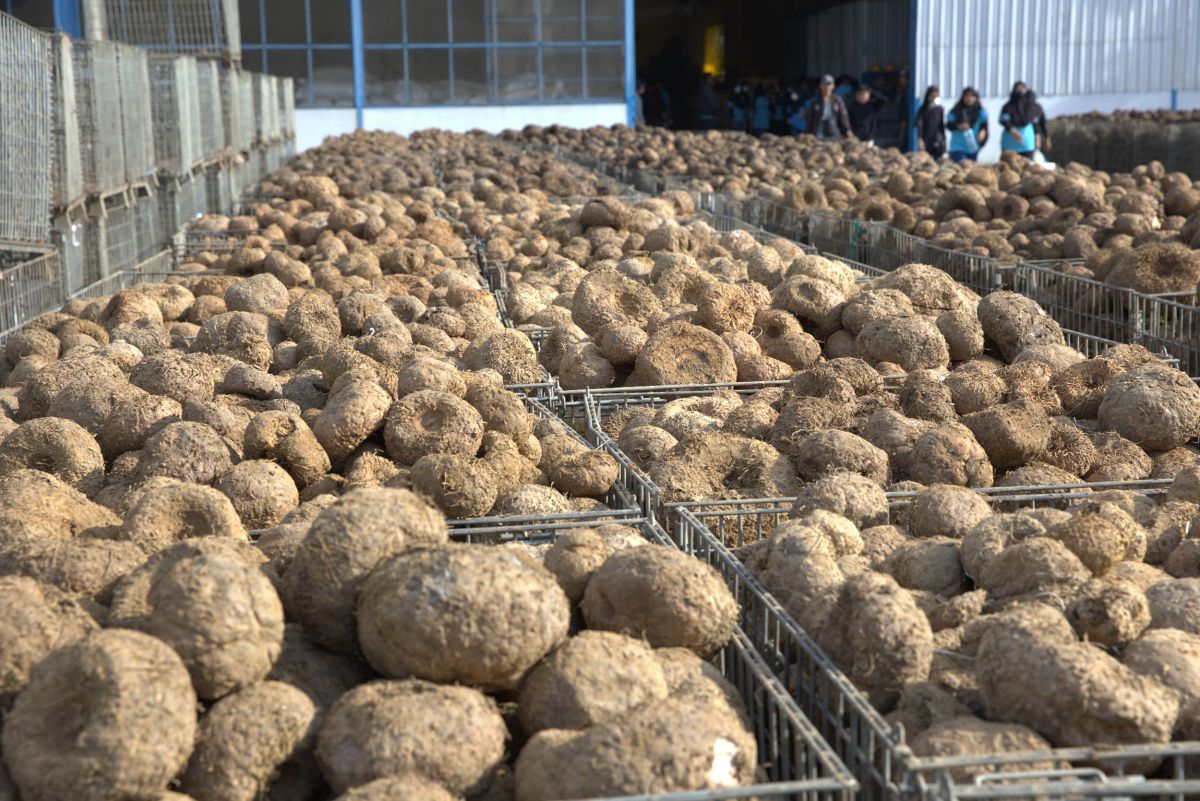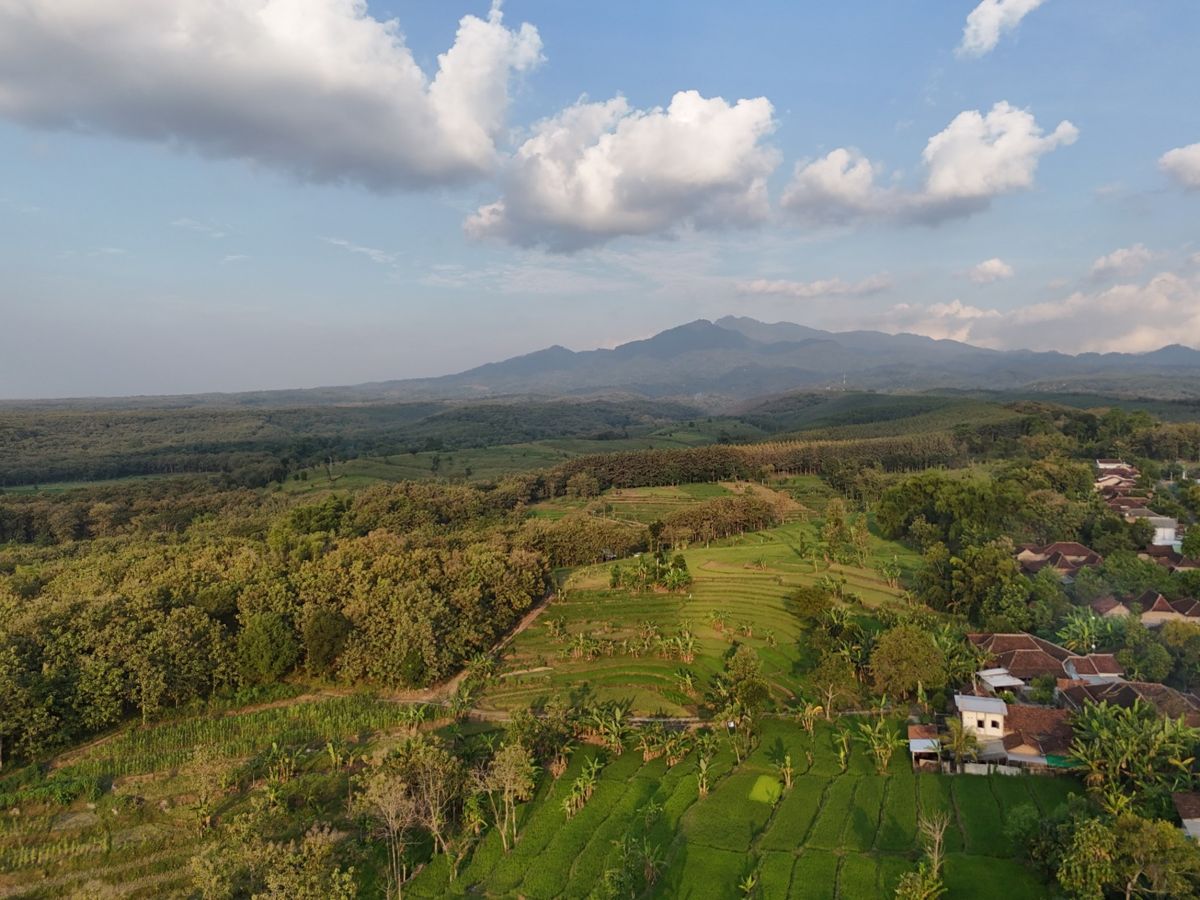Margowitan Model Forest: An integrated approach towards improved livelihoods and sustainable forests

Located in East Java, Indonesia, the Margowitan Model Forest is a significant production forest landscape, with boundaries spanning four districts – Madiun, Ponorogo, Ngawi and Magetan. Known for its rich biodiversity and sustainable forest management practices, it was set up nearly 20 years ago, with Perum Perhutani, the state forest company of Indonesia, as the lead agency, in partnership with the Ministry of Environment and Forestry, local farmer cooperatives and the local governments of the four districts.
Through the years, Margowitan has served as a living laboratory for studying and implementing ecological preservation and community-based resource management. “For communities in the four districts, this forest plays a crucial role in balancing local needs with environmental conservation,” says John Novarly, Margowitan Model Forest’s focal person. He adds, “The forest presents livelihood opportunities that go hand in hand with ensuring the protection of natural resources.”
Economic empowerment
One of the biggest ways in which the Margowitan Forest Model has made a difference has been by strengthening economic welfare for local communities. Through company-community partnerships that promote local livelihoods, community members have been able to engage in non-timber forest product collection and processing, medicinal plant cultivation and ecotourism.
As forest products from Margowitan are marketed internationally as well as domestically, community members have additional sources of income. Similarly, the development of ecotourism has provided them with new job opportunities. Many community members work as tour guides, homestay managers and souvenir craftspeople.
A number of youth from the Margowitan Model Forest landscape have found livelihoods as guides. Astuti Arini, a 21-year-old student from Magetan, works as a tour guide at the Mojosemi Forest Park in the Mount Lawu ecotourism site. “It has been less than a year, but I have learned a lot by working here,” he says. “There is money, of course, but the job also gives me the opportunity to meet tourists from all around the world, exchange knowledge and make friends with them.”
Improving locals’ quality of life
Through the years, the Margowitan Model Forest has succeeded in improving the quality of life of its community members. They now have more stable and diverse incomes and better access to basic services. The sustainability of the forest and the healthier environment fostered also contribute to improved community well-being.
A notable success story is that of the cultivation of konjac, a tuberous crop locally known as ‘porang’, which is popular as a food in China, Korea and Japan. Konjac grows in upland areas amidst teak, mahogany and rosewood stands, and Margowitan’s farmers have reported substantial profits from its cultivation. Nurrosid, a farmer from Kuwu village in Madiun, for instance, mentioned earning USD 7,000 (IDR 114 million) from his konjac harvest in 2023. While these successes are to be celebrated, challenges persist when it comes to scaling up production and maintaining quality standards for konjac cultivation.

On the other hand, ecotourism has also gained traction in Margowitan’s mountainous areas. Through partnerships between Perhutani, private entities and local communities, guided forest walks and “glamping” experiences featuring amenities-enabled camping services and locally sourced products are being offered.
Cooperatives are also another success story. Sri Wahyuni, a cooperative leader in Magetan, started her business in 2008 with two cows. She used to sell milk door-to-door as it was initially difficult for her to find buyers. In 2012, she joined the cooperative and received training that helped improve both her products and her salespersonship. She now has 18 cows and sells her milk products through the cooperative shop, which she manages, along with a team of mostly youth and women. Wahyuni’s success has inspired others in the community. The growth of such enterprises exemplifies how economic opportunities can foster community prosperity while promoting environmental stewardship.
Sustainable forest management and rehabilitation
The Margowitan Model Forest emphasizes the importance of active community participation in sustainable forest management and protection. Communities are invited to engage in replanting activities, forest patrols and wildlife monitoring. This helps maintain forest sustainability while increasing public awareness of the importance of protecting the environment.
This forest management programme also provides incentives for community members who actively protect forests. These incentives can be in the form of agricultural assistance, training and capacity building, improvements to village infrastructure or access to environmental services. Thus, communities feel they have a direct interest in protecting the forest.
Sumarno, a farmer from Ponorogo and a leader of the local Forest Village Community Group talks about how sustainability can be ensured through partnerships formed with the Margowitan Model Forest. “I first learned about the agroforestry system from Perhutani,” he says. “This helped me to survive during the Covid-19 pandemic and lockdown periods as my income was not dependent on only one plant.”
Environmental education and awareness
Environmental education programmes have been introduced in schools in the Margowitan Model Forest landscape, from the elementary to secondary levels. These cover, among other things, the importance of forests and biodiversity and ways to protect the environment. The Saka Wanabhakti student group in Mojokerto, for instance, typically orients new members by taking them camping in Mount Lawu.
In addition, various workshops and seminars are also held for the communities. Topics discussed include environment-friendly farming techniques, waste management and adaptation to climate change. This education aims to create a more environmentally conscious and sustainable society.
Challenges ahead
Despite their successes, the Margowitan Model Forest stakeholders, including Perhutani, face significant economic challenges, including a decline in revenues. Global market pressures and fluctuating demands have led to a decline in revenues from eucalyptus, pine resin and timber. In 2024, a local eucalyptus oil factory, which opened in 2022, had to halt production, impacting local farmers who had, for two years, been selling eucalyptus leaves to the factory.
Another major challenge has to do with ensuring the independence of the Margowitan Model Forest. Currently, the Model Forest is largely dependent on Perum Perhutani, its main stakeholder. There is a need to mobilize existing resources and explore other institutions that can provide support to the Margowitan Model Forest. Such support may not always be provided in the form of funds but rather through facilitation and training.
Looking ahead, Margowitan’s stakeholders must innovate their economic strategies to ensure sustainability. Conducting market analyses will be crucial in identifying new economic opportunities in sustainable forest production and ecosystem services. Collaborative governance and innovative economic models will also be essential to navigating these transitions successfully.

RECOFTC to support sustainable forest management and better livelihoods
Since assuming the role of Secretariat of the Regional Model Forest Network–Asia (RMFN–Asia) in January, RECOFTC has embarked on introductory visits to Model Forests across Asia to engage with local stakeholders and assess each landscape.
A RECOFTC team visited Margowitan earlier this year and noted both its achievements and the need to address existing challenges. Julian Atkinson, Secretariat Manager of the Regional Forest Model Network–Asia, says, “Margowitan Model Forest is a real example of how sustainable forest management can have a significant positive impact on the surrounding community. RECOFTC looks forward to supporting Margowitan Model Forest stakeholders to build on its key successes to ensure sustainable landscape development continues in the future.”
Over the years, the Margowitan community has come to see the forest not only as a resource but also as an asset to be protected and preserved. This awareness has created a more harmonious relationship between humans and nature, helping ensure that future generations can enjoy the same benefits that today’s community members do.
###
Lasmita Nurana is Communication Officer at RECOFTC Indonesia.
The Regional Model Forest Network–Asia is supported by the Global Leadership Program under the Department of Natural Resources, Government of Canada.
RECOFTC’s work is made possible with the support of the Swiss Agency for Development and Cooperation and the Government of Sweden.

